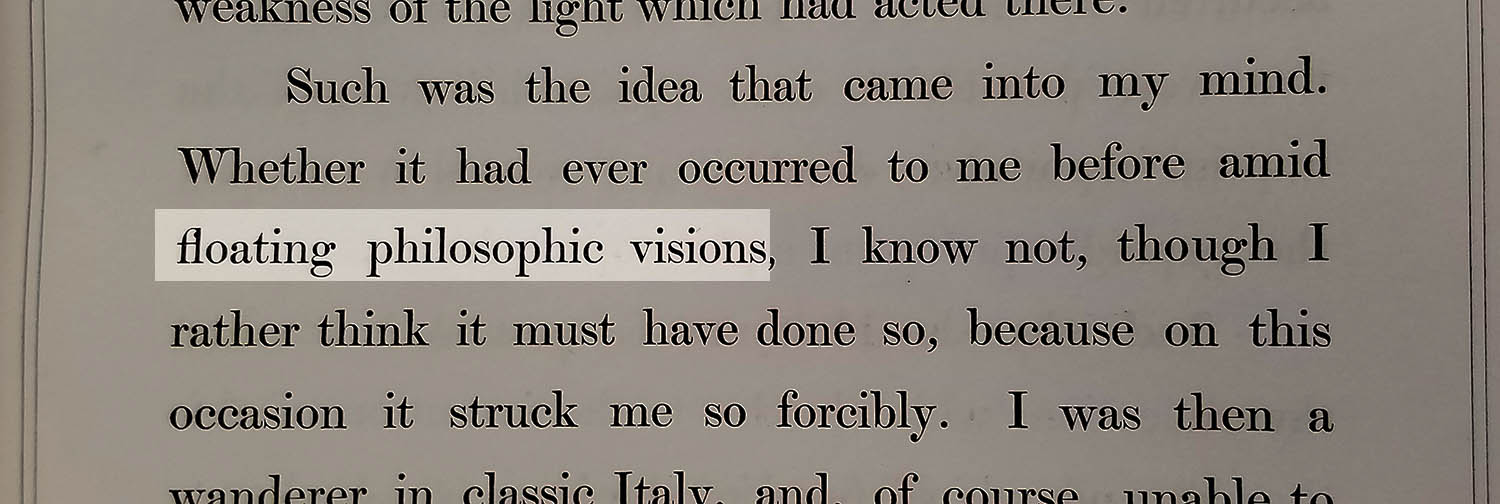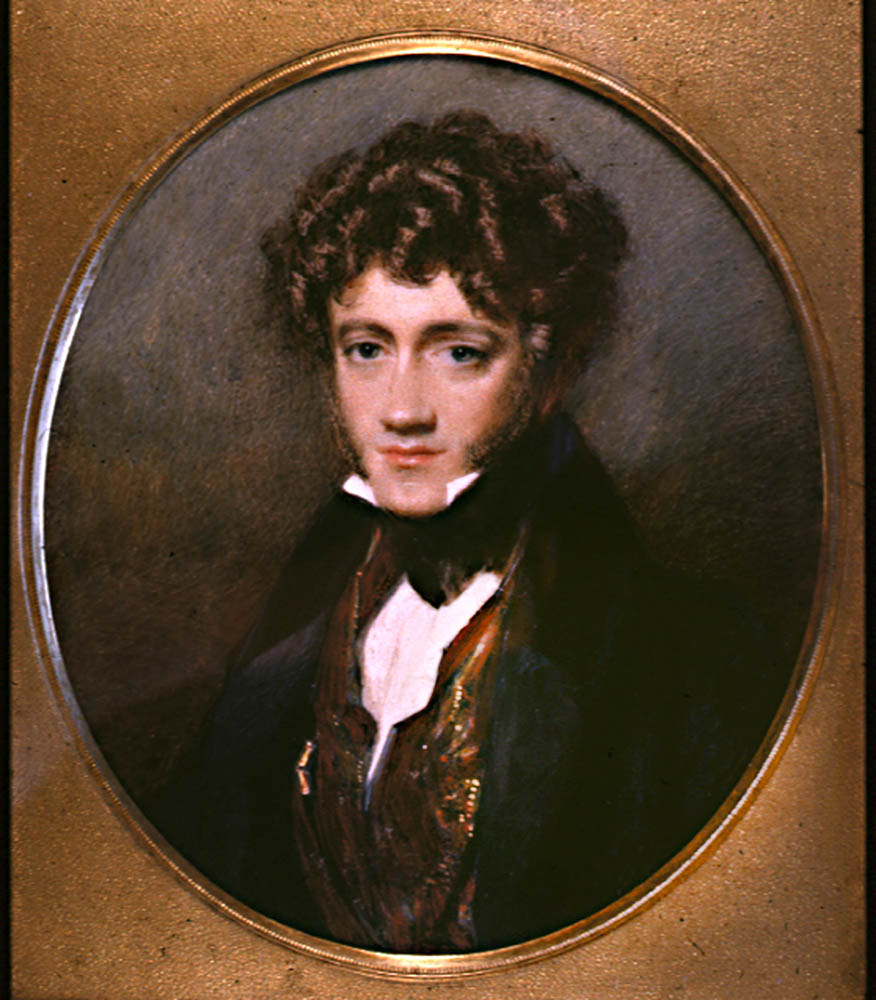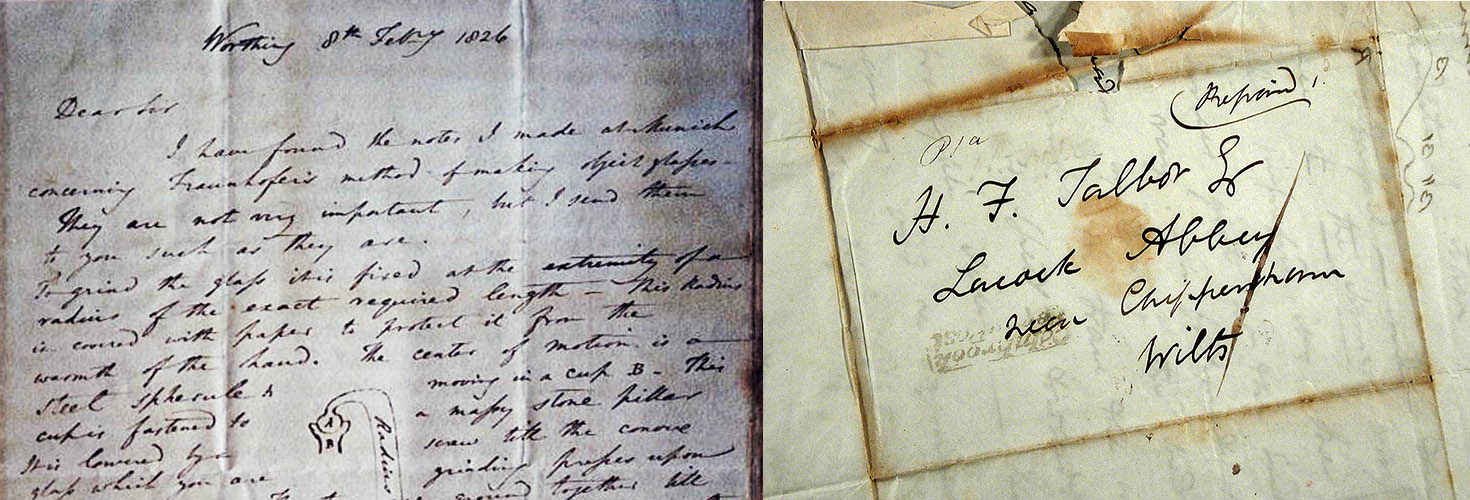Origin or creation stories are often problematic, for invariably they involve imperfect or partial memories of a near-distant or far-distant past. Often these are filtered through contemporary needs or desires, sometimes deliberately, sometimes unconsciously. The first time that Henry Talbot was confronted with recollecting the roots of his invention was in January 1839 when he was suddenly forced to establish and defend the individual priority of his own work against the different priority of Daguerre. The second major time was with the 1844 publication of The Pencil of Nature. As would be expected, in this pioneering publication he was obliged to at least briefly outline how he came to the position of being a photographic artist.
Coming right at the start of The Pencil of Nature, it is easy to criticize this brief essay as a too-smooth, too-well groomed, too sanitized, too self-serving an account of Talbot’s first endeavours, and over the years various historians have availed themselves of the opportunity to do so. I would certainly agree that there is a consistency of narrative flow here that runs counter to the complexities of history. But in spite of half a century of myself maintaining a healthy skepticism of this story, I remain thinking that Talbot’s recollection must be essentially honest and true. Henry himself wondered if there weren’t influences beyond his recollection that had shaped the course of discovery. He thought back to those first days of October 1833, sitting on the shores of Lake Como and frustrated by his lack of draughtsmanship skills.
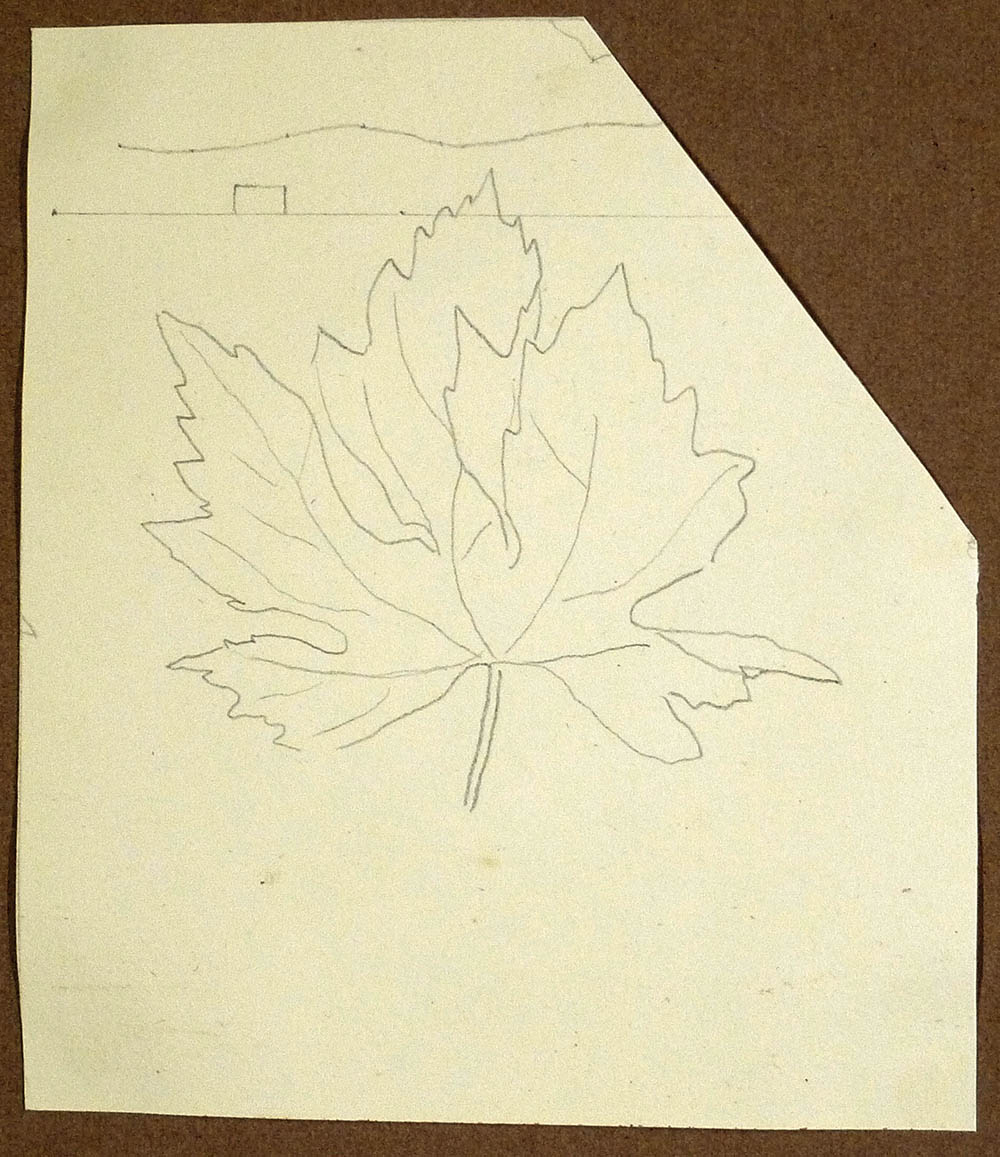
We’ve covered the Lake Como story in more detail before. Talbot was surrounded by others who were happily sketching away – his new wife Constance, his half-sister Caroline and other family members – and I am sure that rather than mocking him they tried to help him. Contained in the same sketchbook as his more famous view of the scene at Villa Melzi, this simple little leaf might have been this own work or perhaps a demonstration by a tutor. The pencil dots at the top probably show how to outline the hills in a manner that will lead to a line. From here, of course, he turned to the camera lucida.
Eleven years after this session of frustration, in writing his ‘Brief History of the Art’ for The Pencil of Nature, Henry tried to recall the steps that led to his eureka moment. Yet Talbot himself openly questioned whether there was something operating in the background:
Such was the idea that came into my mind. Whether it had ever occurred to me before amid floating philosophic visions, I know not, though I rather think it must have done so, because on this occasion it struck me so forcibly. I was then a wanderer in classic Italy, and, of course, unable to commence an inquiry of so much difficulty: but, lest the thought should again escape me between that time and my return to England, I made a careful note of it in writing, and also of such experiments as I thought would be most likely to realize it, if it were possible.
I have long felt that the source of Talbot’s uncertainty about his inspiration lied in the contact with his mentor and old friend, John (later Sir John) Herschel. We are so conditioned by Julia Margaret Cameron’s stunning late-life photographs of this great man that we sometimes forget that he was a young person of considerable vigour when he and Talbot first met. Henry was certainly a generation younger, but they were essentially contemporaries, especially in the backward-looking telescope of history. Herschel, of course had a long history of dealing with matters that later influenced the course of photography, most famously his experiments with hyposulphite of soda (hypo) two decades before photography became known to the public.
Soon after they first met by chance in Munich in 1824, John Herschel and Henry Talbot became regular correspondents, exchanging ideas and information on a wide range of subjects. There are nearly 150 known letters between them that have been preserved.
But there was one episode in their relationship that has always stood out for me. This was at a breakfast meeting arranged by Charles Babbage. On Sunday, 26 June 1831, Herschel recorded in his diary that he “Breakfasted at Babbage’s – Brewster – Talbot -Drinkwater -Robt Brown.” Joseph Drinkwater was a chemist. Robert E. Brown was a chemist and geologist, but it is also possible that this was the botanist, Robert Brown, the subsequent owner of Franz Bauer’s 1827 Niépce plates. Herschel also recorded in another notebook that Sir David Brewster visited Slough on 29 and 30 June. Unfortunately, no written reaction by Talbot has been located. His diary for that period was a small one, and under Sunday 26 June he merely recorded that he had “Breakfasted with Mr Babbage – Brewster – Herschel – Brown.”
John Herschel was always happy to share his current research with old friends. In accepting the invitation to breakfast, he informed Babbage that “3 days ago I fell on a most striking instance of the effect of violet light in producing a chemical compound of a singular nature – a platinate of lime which I mention to you that you may remind me to tell B. of it.” Herschel’s `platinate of lime’ (calcium chloroplatinate) was a compound quite similar to what was later used in commercial platinum printing. Herschel’s notebook entries and sketches clearly show that he was letting light make simple patterns in the test-tube solutions by masking areas with opaque paper. Some of our readers will immediately think of the earlier and more familiar demonstration with silver salts by Johann Heinrich Schulze.
Little more than two years later at Lake Como, in thinking his way out of his dilemma did Talbot contemplate having watched his friend Herschel produce a rudimentary pattern through the action of light? It seems very likely that this episode must have played a role in having confidence that Nature could do her own drawing through a chemical reaction to light. In composing his history for The Pencil of Nature from memory, with the events clouded by the passage of eleven years, was this the ‘floating philosophic vision’ that Talbot struggled to recall?
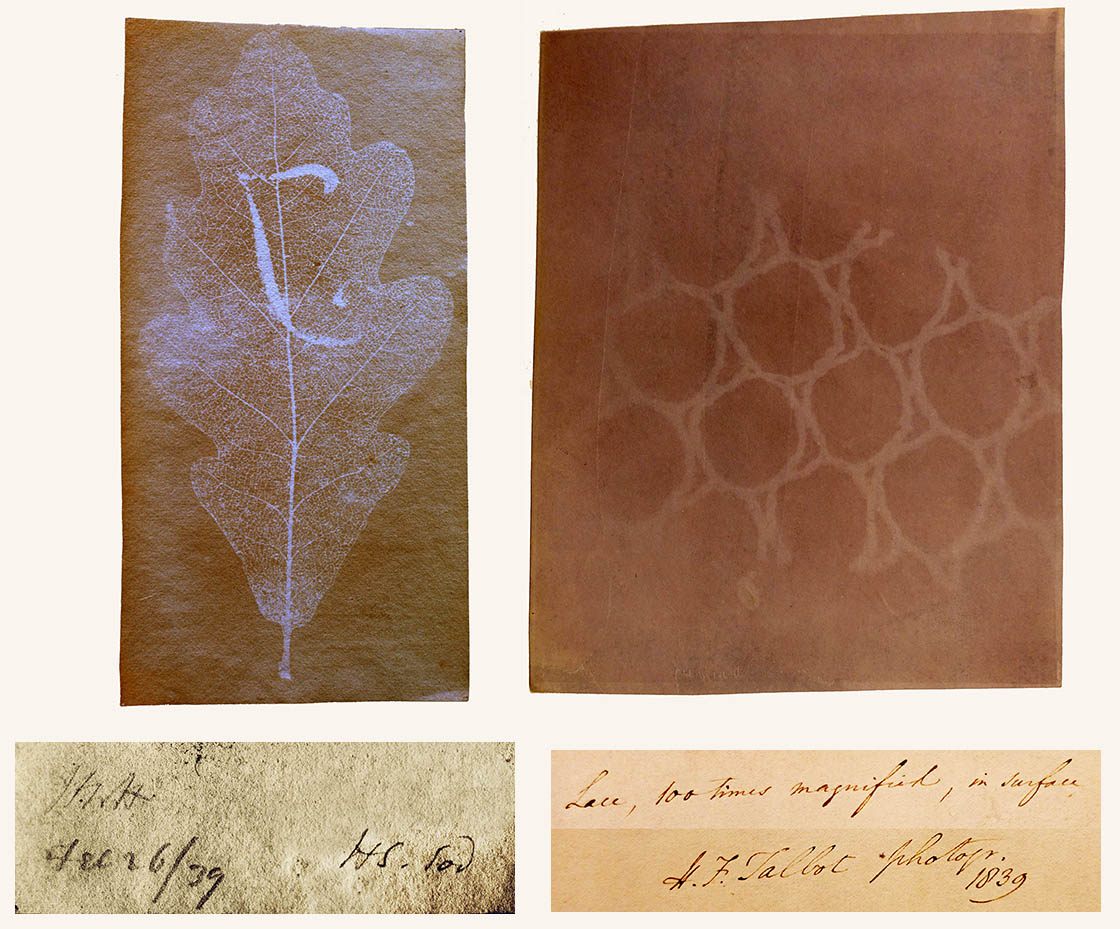 As soon as Daguerre brought Talbot out of his intellectual shell, Henry immediately got in touch with Sir John Herschel and within less than a week Herschel independently invented his own photographic process, the first of many experiments. Two two men actively traded photographic examples, as in the case above. No mention was ever made of the possible ‘floating philosophic vision’ – the two friends were entranced by the shared discoveries of the myriad interactions of light and chemistry.
As soon as Daguerre brought Talbot out of his intellectual shell, Henry immediately got in touch with Sir John Herschel and within less than a week Herschel independently invented his own photographic process, the first of many experiments. Two two men actively traded photographic examples, as in the case above. No mention was ever made of the possible ‘floating philosophic vision’ – the two friends were entranced by the shared discoveries of the myriad interactions of light and chemistry.
Larry J Schaaf
• Questions or Comments? Please contact digitalsupport@bodleian.ox.ac.uk • WHFT? or a relative?, Leaf and rudimentary skyline, pencil on paper drawing, October 1833, Talbot Collection, National Science and Media Museum, Bradford, 1937-2537. • Alfred E. Chalon, John Herschel, miniature painting, 1829, courtesy of the Herschel-Shorland family. • The letters shown are Document numbers 04052 and 01262. • Four of Herschel’s notebooks have been digitised and can be freely consulted online. • Sir John Herschel’s 1831 Diary is in the Herschel Collection of the Harry Ransom Center, The University of Texas at Austin. Herschel’s other notebook is in the Herschel Collection of the Science Museum, London. • Talbot’s 1831 Diary is in the Talbot Collection of the British Library, London. • Herschel’s letter to Babbage was written on 23 June 1831 and is in the archives of The Royal Society of London. • Schultze’s silver salt experiments are covered in Joseph Maria Eder (translated by Edward Epstean), History of Photography, (New York: Columbia University Press, 1945), pp. 60-63. • Sir John Herschel, Leaf with Letter Superimposed, photogenic drawing negative, 26 February 1839, the Museum of The History of Science, Oxford. WHFT, Lace, 100 times magnified, in surface, photogenic drawing negative, 1839, Herschel Collection, National Science and Media Museum, Bradford, 1943/33-3; Schaaf 2275.


